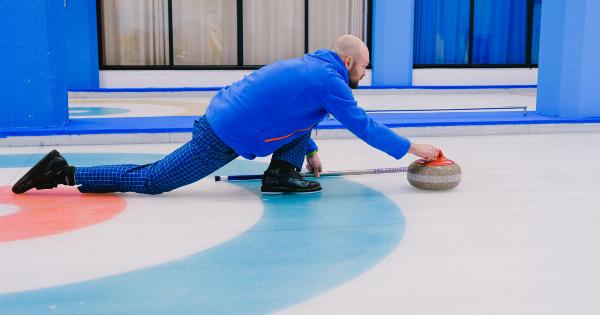Knee pain is a common problem that affects millions of people worldwide. It can have a significant impact on one’s daily activities, mobility, and quality of life.
To effectively manage and treat knee pain, it is crucial to understand its causes, symptoms, and available treatment options.
Causes of Knee Pain
There are several potential causes of knee pain, ranging from acute injuries to chronic conditions. Here are some common causes:.
1. Osteoarthritis
Osteoarthritis is the most prevalent form of arthritis and a leading cause of knee pain, especially in older adults.
It occurs when the protective cartilage that cushions the knee joint deteriorates over time, leading to pain, stiffness, and decreased mobility.
2. Ligament Injuries
Tearing or stretching of the knee ligaments can cause severe pain and instability. Anterior Cruciate Ligament (ACL) tears are particularly common among athletes or individuals participating in high-impact sports.
3. Meniscus Tears
The meniscus is a piece of cartilage in the knee joint that cushions and stabilizes it. Tears in the meniscus can occur due to sudden twisting or direct impact to the knee. These tears can cause pain, swelling, and limited range of motion.
4. Bursitis
Bursitis refers to the inflammation of the bursae, small fluid-filled sacs that provide cushioning between bones, tendons, and muscles. When bursae in the knee become inflamed, it can result in knee pain, tenderness, and swelling.
5. Tendinitis
Tendons are the thick cords that connect muscles to bones. Overuse or repetitive stress can lead to tendinitis, which is the inflammation of the tendons surrounding the knee joint. This condition often causes pain and difficulty with movement.
6. Patellofemoral Pain Syndrome
Also known as “runner’s knee,” patellofemoral pain syndrome is a common condition among runners and athletes.
It involves pain and discomfort around the kneecap (patella) due to factors such as muscle imbalances, tightness, or misalignment.
7. Rheumatoid Arthritis
Rheumatoid arthritis is an autoimmune disorder that affects the joints, including the knees. It leads to chronic inflammation, pain, and stiffness in the affected joints, often causing significant discomfort.
8. Gout
Gout is a type of arthritis caused by the buildup of uric acid crystals in the joints. While it often affects the big toe, gout can also cause severe knee pain, swelling, and redness.
9. Fractures
A broken or fractured bone in the knee can result in intense pain, swelling, and an inability to bear weight on the affected leg. Fractures are usually caused by traumatic incidents such as falls or sports-related accidents.
10. Obesity
Excessive body weight puts additional stress on the knee joints, leading to chronic pain and an increased risk of developing conditions such as osteoarthritis. Weight management is crucial for reducing knee pain in obese individuals.
Treatment for Knee Pain
The appropriate treatment for knee pain depends on the underlying cause, severity, and individual factors. Here are some common treatment options:.
1. Physical Therapy and Exercise
Physical therapy plays a crucial role in alleviating knee pain. Therapeutic exercises help strengthen the muscles around the knee joint, improve flexibility, and promote proper alignment.
Physical therapists also provide techniques for pain management and functional improvement.
2. Medications
Over-the-counter nonsteroidal anti-inflammatory drugs (NSAIDs) like ibuprofen may help reduce pain and inflammation in the knee.
In severe cases, prescription medications, including corticosteroids or hyaluronic acid injections, might be recommended to provide relief.
3. RICE Method
The RICE method (Rest, Ice, Compression, Elevation) is often used to manage knee pain caused by acute injuries or inflammation.
Resting the knee, applying ice packs, compressing the area, and elevating the leg help reduce swelling, relieve pain, and facilitate healing.
4. Assistive Devices
Using assistive devices like crutches, braces, or knee sleeves can provide stability and support to the knee joint, particularly when recovering from injuries or managing conditions like arthritis.
5. Injections
In certain cases, injections of corticosteroids or hyaluronic acid directly into the knee joint may be recommended to provide pain relief and improve joint mobility.
6. Surgery
Surgical intervention may be necessary for severe or persistent knee pain that does not respond to conservative treatments.
Procedures such as arthroscopy, knee replacement, or ligament reconstruction can help repair or replace damaged structures and restore joint function.
7. Lifestyle Modifications
Adopting a healthy lifestyle can significantly contribute to managing knee pain.
Maintaining a healthy weight, engaging in low-impact exercises, using proper techniques during physical activities, and avoiding excessive stress on the knees can help reduce pain and prevent further damage.
8. Alternative Therapies
Some individuals find relief from knee pain through complementary and alternative therapies like acupuncture, chiropractic care, herbal supplements, or transcutaneous electrical nerve stimulation (TENS).
However, the effectiveness of these approaches may vary, and consultation with a healthcare professional is advised.
9. Joint Supportive Supplements
Certain dietary supplements, such as glucosamine and chondroitin sulfate, are believed to support joint health and reduce knee pain, although their effectiveness is still a topic of debate.
It is essential to consult with a healthcare provider before starting any new supplements or treatments.
10. Rest and Self-Care
Resting the knee and practicing self-care, such as applying heat or cold packs, taking warm baths, and practicing gentle stretching, can help relieve knee pain and promote healing.
Conclusion
Knee pain can significantly impact one’s quality of life, but understanding its causes and treatment options is the key to effective management.
Identifying the underlying cause of knee pain and consulting with a healthcare professional can help determine the most appropriate treatment plan. Whether it is through physical therapy, medications, lifestyle modifications, or in some cases, surgical intervention, finding relief from knee pain is possible.























